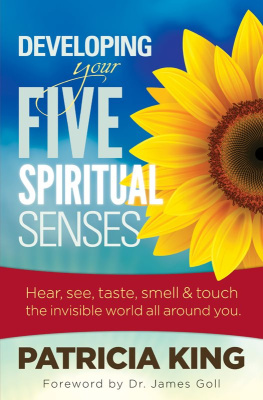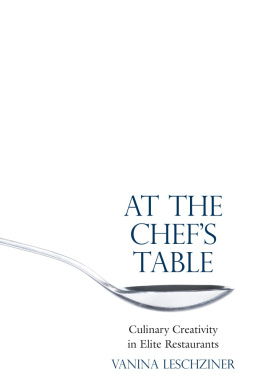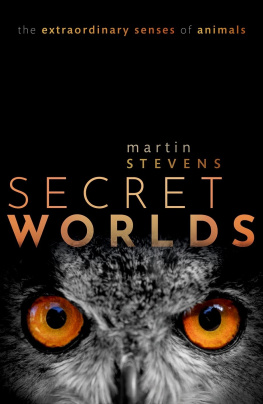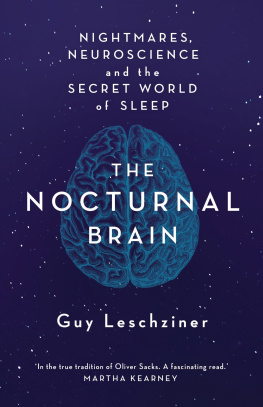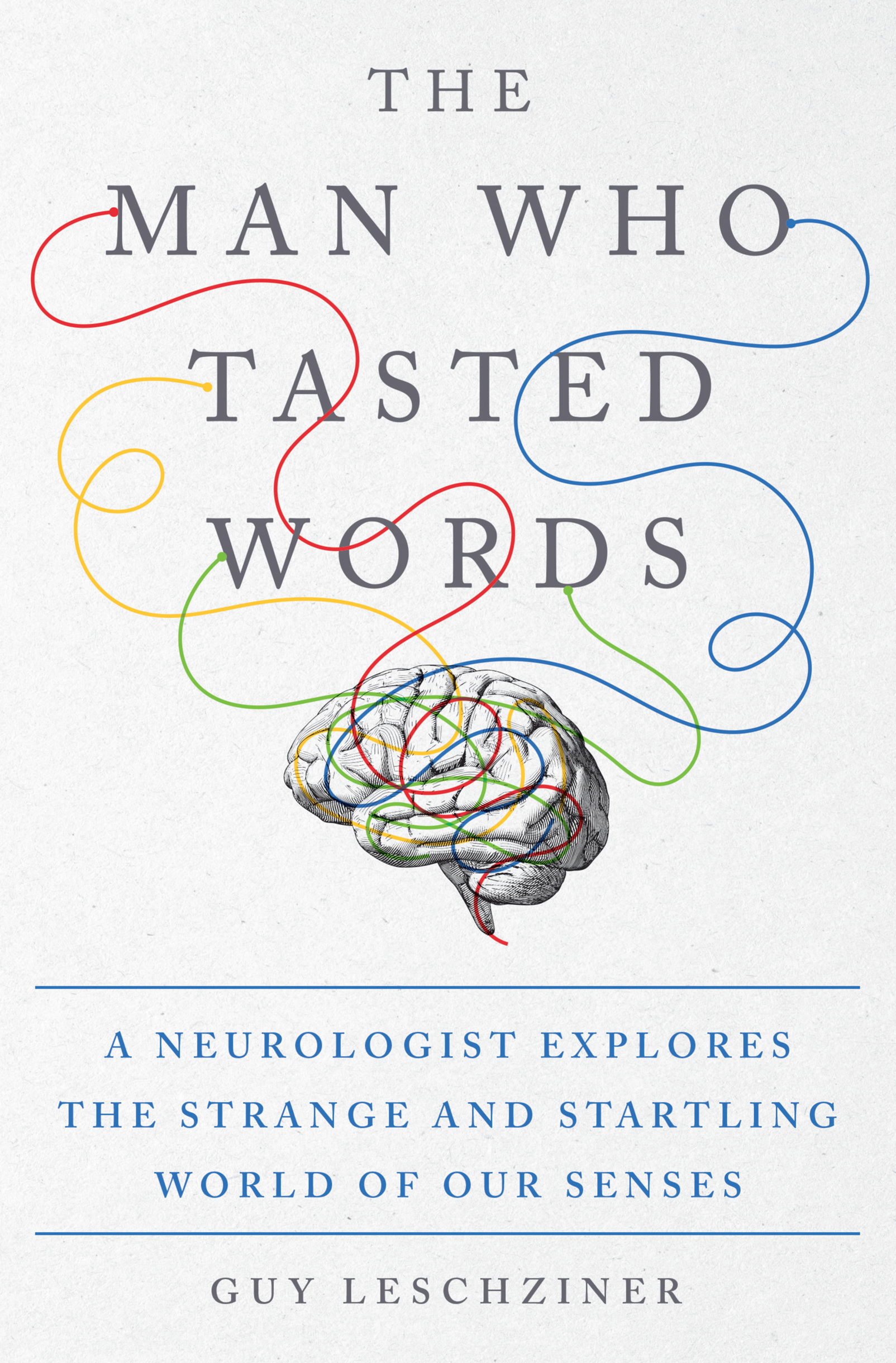Contents
Guide
Pagebreaks of the print version

The author and publisher have provided this e-book to you for your personal use only. You may not make this e-book publicly available in any way. Copyright infringement is against the law. If you believe the copy of this e-book you are reading infringes on the authors copyright, please notify the publisher at: us.macmillanusa.com/piracy.
For Frida and Michael
Man has no Body distinct from his Soul for that calld Body is a portion of Soul discerned by the five Senses, the chief inlets of Soul in this age.
William Blake, The Marriage of Heaven and Hell
And God said, Let there be light, and there was light. And there was the sound of running water, the feel of the breeze on Adams face, the smell of the flowers, and the taste of the apple in Eves mouth. Thus was the world born, and thus are we born into this world, from the moment our eyes open, dazzled by the light, our nostrils filled with the scent of our mother, the sweetness of milk on our tongue, the soothing sound of the maternal voice and the warm, comforting feel of skin on skin. The universe is brought into sharp reality as we begin to perceive our surroundings through our senses. And, indeed, we are reborn into this world with every waking moment, the transition between our dreams and the cold, hard world played out as we crack open our eyes, the morning sounds of the hum of traffic or birdsong drawing us down from our slumber, back to Earth with a bump.
Consider any instant in your life, from the mundanities of your daily grind to those special, treasured moments the smell of the nape of a loved ones neck, or that of a freshly brewed cup of coffee; the taste of a dish that takes you straight back to childhood a fragmentary, comfortable memory of happy times; your favourite track suddenly playing on the radio; the familiar sight of a display board on the train platform, signalling the delay of your morning train; the feel of your childs hand in your own.
These snapshots of our lives constitute the merging of our external and internal worlds, the coming together of our memories, emotions, histories and desires, and our environment. And it is upon our senses vision, hearing, taste, smell and touch that we rely to perceive the reality of our world beyond our own body. These senses are our windows on reality, the conduits between our internal and external lives. They are how we absorb the outside world. Without them, we are cut off, isolated, adrift. We cannot live anything other than a virtual life, within the realms of our own minds.
My earliest memory is orange. Not the fruit, but a lurid, acid-tinged colour peculiar to, and the quintessence of, the 1970s. I can see the sky above, but all around me, on every side, is orange.
For many years, I could never quite place this memory of orange. Its origins remained a mystery, its age unknown. It is some years later, perhaps in my teens, that I come across a photo in a family album; vintage tones and curled at the edges. My mother, her hair tightly curled, stands in the centre of a square in the small village in West Germany of my early childhood. Next to her, a pram; a small infant, me, inside it. The pram has the sheen of plastic, a vinyl that must have been the height of modernity in the mid-70s. And the colour of the pram is orange, the precise shade in my minds eye. All of a sudden, I understand. The blurry vision of the past: me, sitting in the pram, looking up, the hood of orange fabric framing the square of clouds and sky.
But another explanation occurs to me. Perhaps I have seen this photo before, in the months or years after my family came to England, looking through the scanty souvenirs of our past life in another country. And perhaps I have seen this pram, this colour, many times before. Maybe this memory that I have that I have always held to be the earliest conscious remnant of my life is not real. Maybe it is a false memory that I have created, a fictional portrayal of my past, a betrayal by my mind.
We are all familiar with the concept of inaccurate or incomplete memory, aware that our recollection of events may fade or degrade with time. We may misremember or forget entirely. We may even create memories from nowhere. The shortcomings of our brains are readily apparent. But perhaps there is another possibility. It is not just the memories of our experiences that are vulnerable to the vagaries of the functioning of our brains. It is the experiences themselves.
The sights, sounds, smells, tastes and feel of the world around us are solid, crisp, distinct and real. We do not doubt them; Seeing is believing. The act of sensing something for ourselves cements it in reality no longer a story told or heard, experienced second-hand, but a fixed representation of the real world around us, as solid as the floor beneath our feet, and sharp as the knife blade that cuts our finger, as bright as the sun blinding us with its light. Our sensations are our portal into the physical world that envelops us, moulds and shapes us. Through the act of sensation, doubt is cast aside, our faith in what we see or hear more absolute than a devout persons belief in God. In Aristotles view, the five senses are the basis of all knowledge, through which we observe the essence of the world; through our senses, the material world interacts with our psyche. Our inner world, our mind, is like soft wax imprinted with our sensory experiences.
Yet perhaps we should be more agnostic, less fervent in our trust of our senses, more questioning of our eyes, ears, skin, tongue and nose. We imagine that these organs that convey our senses are reliable and precise witnesses of our external worlds, accurately reporting on the colour of the bunch of roses we gaze upon, or the pain of pricking our finger on one of the thorns. But we imagine wrongly. What we believe to be a precise representation of the world around us is nothing more than an illusion, layer upon layer of processing of sensory information, and the interpretation of that information according to our expectations. Like the shaded shape on a flat piece of paper that we see as a three-dimensional object, or the feel of an itch without any obvious cause. What we perceive to be the absolute truth of the world around us is a complex reconstruction, a virtual reality recreated by the machinations of our minds and our nervous systems. And, for the most part, we are totally unaware of these processes; we are shaken by the moments when the discordance between our perception and reality are revealed, such as gazing at a drawing by M. C. Escher or squabbling over whether a dress is white and gold or black and blue.
Our sensory end-organs our eyes, ears, skin, tongue and nose are merely the first step in these pathways of perception; what we then experience as, for example, vision or sound relates only loosely to the beams of light falling onto our retina or the sound waves vibrating tiny hair cells in the cochlea of the inner ear. Moving beyond the point at which our bodies physically interact with the world, the complexities of our nervous systems come into play, acting like supercomputers, fundamentally altering what it is we actually feel, taste, smell, see or hear. The translation of these basic inputs into experiences with conscious meaning the pattern of light and dark on the retina transformed into the face of a loved one, or the feel of a cold, damp object in the hand and bubbles gently fizzing on the tongue experienced as a delicious glass of champagne is a process of utmost abstraction, simplification and integration, invisible and undetected by us. The pathways, from physical environment to our experience of it, are convoluted and complex, vulnerable to the nature of the system, friable in the face of disease or dysfunction.


